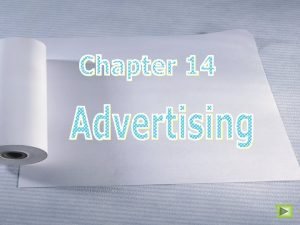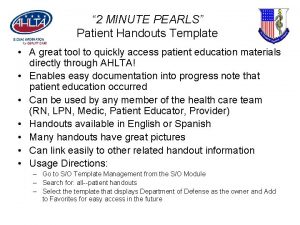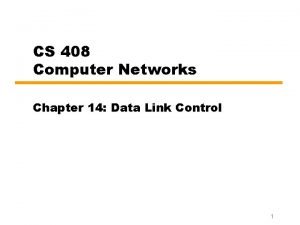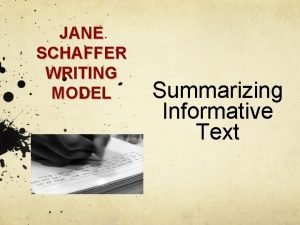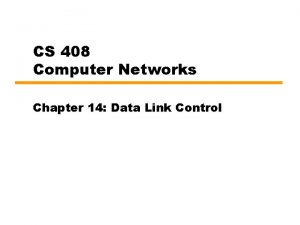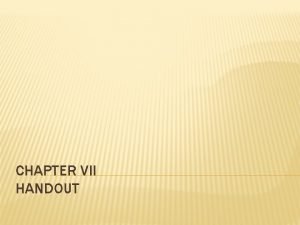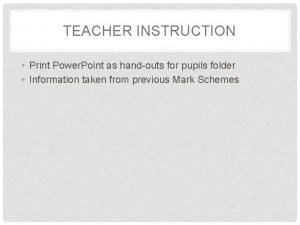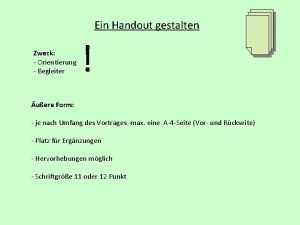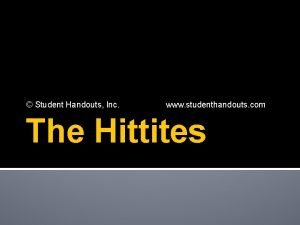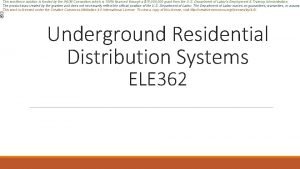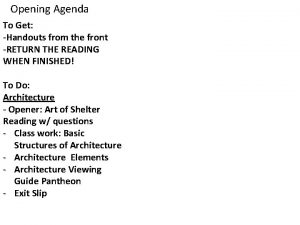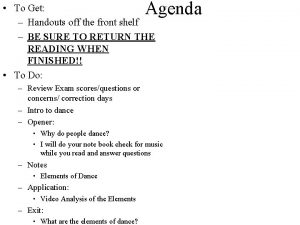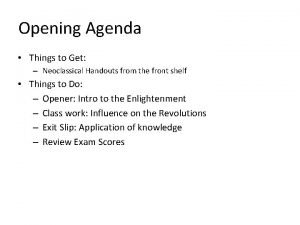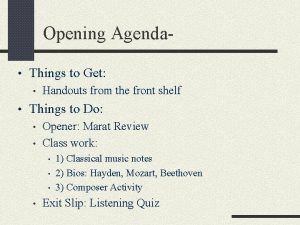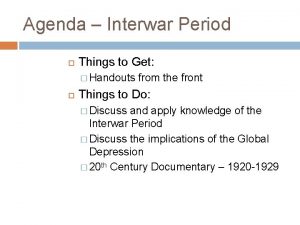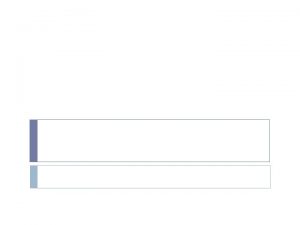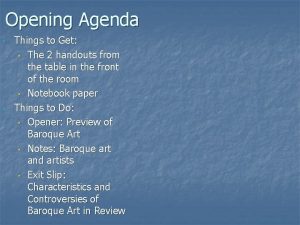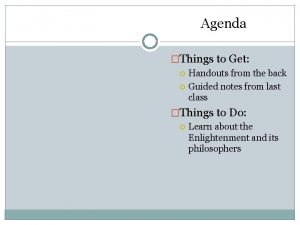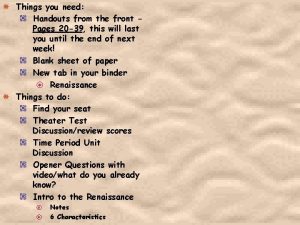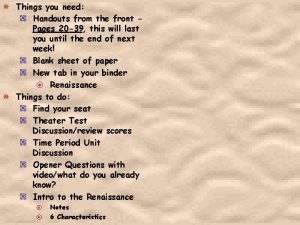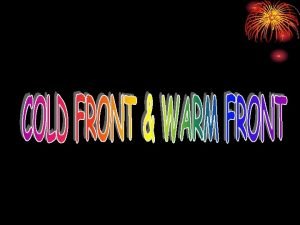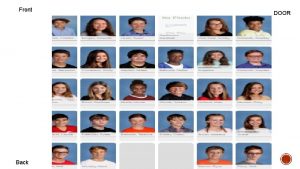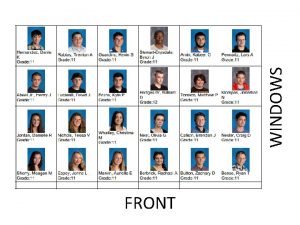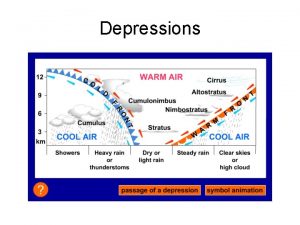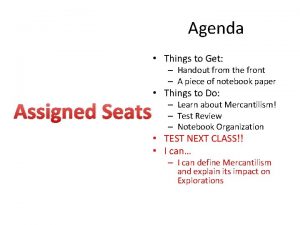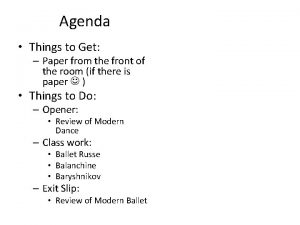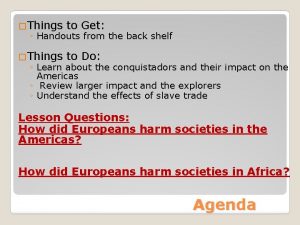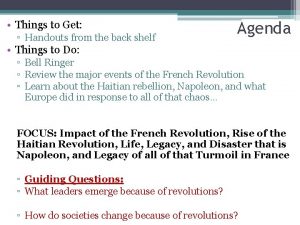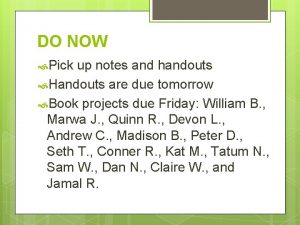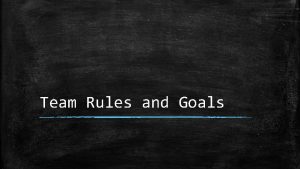Agenda Things to Get Handouts from the front



























- Slides: 27

Agenda • Things to Get: – Handouts from the front • Things to Do: – Learn about the French Revolution • I can… – Identify and explain the causes and major events of the French Revolution

Agenda • To Get: – Handouts from the back – A partner you can work with – Sit where ever today • To Do: French Revolution -Opener and Intro to the French Revolution -Student Centered Notes with Activities -Exit Slip – Tennis Court Oath Application

Opener Part I Define Each Term in YOUR OWN words: • Scientific Revolution • Enlightenment

Opener Part II: • Describe the image and what YOU think is happening.

Influence of Rational thought? 1. Government Finances -7 yrs war -American Rev. -King’s lavish lifestyle 2. Economic Depression -less manufacturing and trade -poor Agriculture -food more expensive -lack of work 3. Enlightenment Ideas -science to solve problems -elect leaders The French Revolution 1789 -1799

Student Centered Lesson • Log on to the webpage: broderickvpa. weebly. com • Click on the World Civ Tab • Scroll to the bottom of the page. • Open the power point labeled French Revolution Beginning • Continue with notes and activities.

The French Revolution Begins Main Idea Problems in French society led to a revolution, the formation of a new government, and the end of the monarchy.

Causes of the French Revolution Long-standing resentments against the monarchy • Inequalities in society – Existing social and political structure – Called the Old Order, or ancient régime • King at the top and estates under him – King Louis XVI, shy and indecisive – Unpopular, self-indulgent queen, Marie. Antoinette – Rest of French society divided into three classes, called estates

The Three Estates Varied widely in what they contributed in terms of work and taxes First Estate Second Estate • Roman Catholic clergy • Nobility • One percent of the population • Less than 2 percent of the population • Exempt from taxes • Paid few taxes • Owned 10 percent of the land – Collected rents and fees – Bishops and other clergy grew wealthy • Controlled much wealth • Held key positions – Government – Military • Lived on country estates Third Estate • Largest group— 97% of the population • Paid most of the taxes! • Bourgeoisie—citydwelling merchants, factory owners, and professionals • Sans culottes—artisans and workers • Peasants—poor with little hope, paid rents and fees

Political Cartoon Annotation (flip to the back of your guided notes) • Explain this political cartoon on your handout by… – Explaining who each individual represents – Explain their physical location in the cartoon – Use a document provided to support your opinion • Each box must have the information above

Further Causes Enlightenment Ideas A Financial Crisis • Inspiring new ideas from Enlightenment philosophers • Severe economic problems affected much of the country • Great Britain’s government limiting the king’s power • France in debt, spending lavishly, borrowing money, and facing bankruptcy • American colonists rebelled successfully against British king • New ideas changed government and society in other countries • Hailstorm and drought ruined harvest; harsh winter limited flour production • People hungry and angry; clergy and nobility no help

First Events of the Revolution By 1789, no group happy • Clergy and nobility lost power to monarchy • Bourgeoisie resented regulations • Poor worse off Estates General meets, 1789 • Desire for reforms • Voting process a problem • Third Estate proclaimed themselves National Assembly • Tennis Court Oath Storming of the Bastille, 1789 • King brought in troops • People of Paris armed themselves Searching for weapons, a mob stormed the Bastille – prison used to store weapons and ammunition Great Fear spread • King to punish the Third Estate with foreign soldiers • Rumors of massacres • Peasants destroyed records and burned nobles’ houses

Estates General Summary (web document OR use the following five slides) • Read the article entitled, “The Estates General” and answer the questions on your handout.






Creating a New Nation Legislating New Rights Restrictions on Power • Feudal dues eliminated • Louis tried to protect his throne • Declaration of the Rights of Men laid out “liberty, equality, fraternity” • Angered the common people • Men are born equal and remain equal under the law • Inspired by the English Bill of Rights, American Declaration of Independence, and the writings of Enlightenment philosophers • The rights did not extend to women • Prices still high; mob broke into the palace demanding bread • Royal family seized; National Assembly took bolder steps • Passed laws against the church, clergy, and public employees • Some outraged by actions

Document Based Analysis Was it REALLY that bad? • Using the documents provided, analyze the conditions in France to determine if a revolution really was necessary.

Document A- French Budget, 1774

Document B Socio-Economic Data, 1789

Document C The French Urban Poor

Document D- Financial Problems in France, 1789 • Urban Commoner’s Budget: – – – Food 80% Rent 25% Tithe 10% Taxes 35% Clothing 20% TOTAL 170% • King’s Budget: – – – – Interest 50% Army 25% Versailles 25% Coronation 10% Loans 25% Admin. 25% TOTAL 160%

Document E - Where is the tax money?

Where is the Money? • In this cartoon from the time, Louis is looking at the chests and asks “Where is the tax money? “ – The financial minister, Necker, looks on and says “The money was there last time I looked. " – The nobles and clergy are sneaking out the door carrying sacks of money, saying "We have it. "

Tennis Court Oath • Using the second handout provided, color in the statements according to what level of society would have said each statement – turn in as your exit slip!
 Get on get off
Get on get off You are my kryptonite figurative language
You are my kryptonite figurative language Agenda sistemica y agenda institucional
Agenda sistemica y agenda institucional Advantages and disadvantages of handouts
Advantages and disadvantages of handouts Patient education pamphlet template
Patient education pamphlet template Cs408 handouts
Cs408 handouts Student handouts.com
Student handouts.com Jane schaffer writing method
Jane schaffer writing method Student handouts inc
Student handouts inc Cs408 handouts
Cs408 handouts Gapped handouts
Gapped handouts Slide samples
Slide samples Define handouts
Define handouts Advantages and disadvantages of handouts in teaching
Advantages and disadvantages of handouts in teaching Handout gestalten
Handout gestalten Www.studenthandouts.com
Www.studenthandouts.com Zoo103 handouts pdf
Zoo103 handouts pdf Get up get moving
Get up get moving Sequence pseudocode
Sequence pseudocode Get up get moving quiz
Get up get moving quiz Get focused get results
Get focused get results Get up get moving quiz
Get up get moving quiz Germer
Germer Dead front vs live front transformer
Dead front vs live front transformer Occluded front gif
Occluded front gif Front
Front How quickly did things get out of hand in salem
How quickly did things get out of hand in salem Questions to get to know someone
Questions to get to know someone



